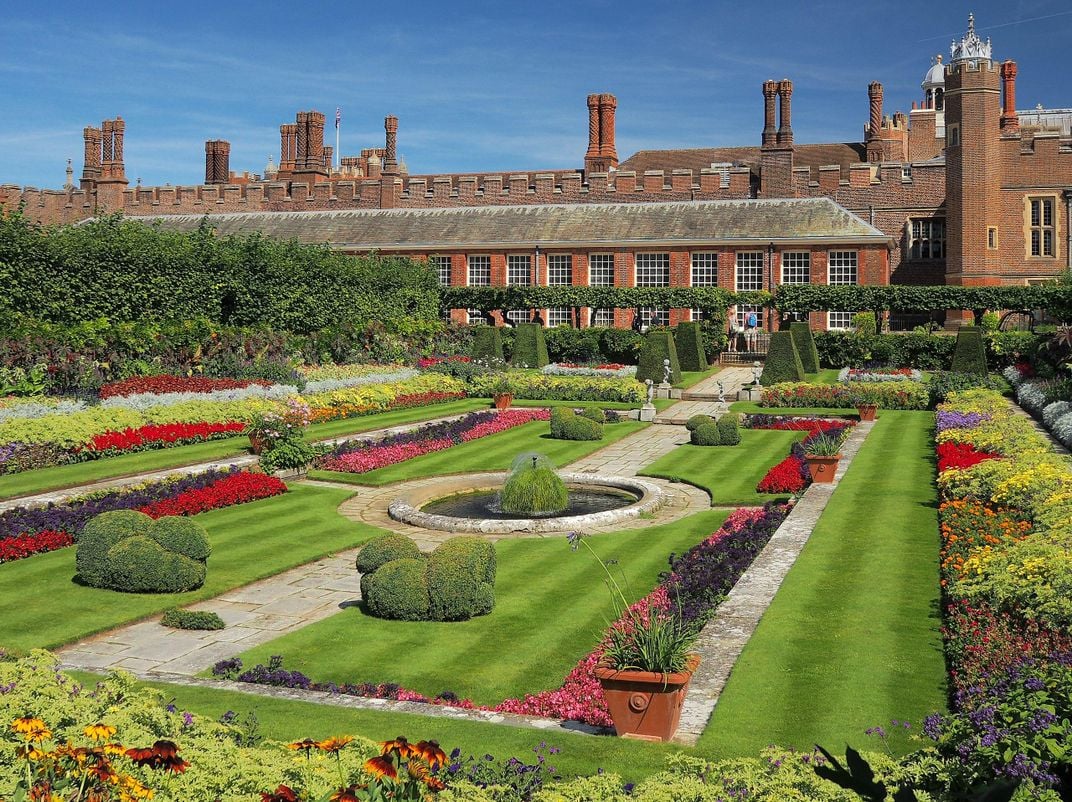Stunningly Well-Preserved Elizabethan Garden Discovered in England
The Tudor manor’s grounds were organized in a geometric pattern of gravel paths, planting beds and pavilions
:focal(596x373:597x374)/https://tf-cmsv2-smithsonianmag-media.s3.amazonaws.com/filer/17/a7/17a7efe6-8de2-45e2-85eb-4a1bedabe59a/ed41cf97cfb94f498da0f51dfe1ab8ff.jpg)
Archaeologists conducting excavations near Birmingham have discovered one of the best-preserved Elizabethan gardens ever found in England.
As BBC News reports, no historical record of the 16th-century gardens, which stretch across nearly 1,000 feet of land on the ruins of a manor in Coleshill, exist.
“[T]here are no plans of it, [and] it is not mentioned in any letters or visitors’ accounts,” says Paul Stamper, an expert on English gardens and landscape history, in a statement.
Aerial photographs taken in preparation for construction of the United Kingdom’s HS2 high-speed railway revealed the first signs of the remains of Coleshill Manor. Over the past two years, researchers with Wessex Archaeology have unearthed additional traces of the Tudor estate.
“This is one of the most exciting Elizabethan gardens that’s ever been discovered in this country,” says Stamper in the statement. “The scale of preservation at this site is really exceptional and is adding considerably to our knowledge of English gardens around 1600.”
The estate’s medieval owner, Sir Robert Digby, rose into the aristocracy by marrying an Irish heiress in about 1598.
“We suspect he rebuilt his house and laid out the huge formal gardens measuring 300 meters from end to end, signifying his wealth,” Stamper says.
/https://tf-cmsv2-smithsonianmag-media.s3.amazonaws.com/filer/98/db/98dbeeca-64fb-48c5-9abc-7283f41ef0ff/ca6e35c0-757d-4259-aff7-e6fb86822f36.jpg)
Per the British Press Association (PA), the gardens were organized in a geometric pattern of gravel paths, planting beds and pavilions. An octagonal moat enclosed the manor and grounds.
Among the discoveries made during excavations was a 13th-century coin found in the moat.
“We’ve also uncovered … some exceptional artifacts, including smoking pipes, coins and musket balls, giving us an insight into the lives of people who lived here,” says Stuart Pierson of Wessex Archaeology in the statement.
The researchers compare the new find to some of the country’s most impressive historical gardens, including those at Kenilworth Castle and Hampton Court Palace. Both sites have been restored to their Tudor-era glory, allowing modern visitors to see how the designs and decorative plants appeared more than 400 years ago.
The former, located in nearby Warwickshire, was created for Elizabeth I by suitor Robert Dudley, Earl of Leicester, and boasts such attractions as a bejeweled aviary and an 18-foot-tall marble fountain. The second, situated on the grounds of Henry VIII’s beloved London palace, features the U.K.’s oldest surviving hedge maze, the world’s largest grape vine and deer descended from the Tudor king’s own herd.

Per British History Online, Coleshill Manor first came into the Digby family’s possession in 1495, when its previous owner, Simon Montford, was convicted of treason for supporting the attempted overthrow of Henry VII by Perkin Warbeck, a Yorkist pretender to the throne. Montford was hung, drawn, and quartered, and Simon Digby, then-deputy constable of the Tower, received his estate.
Parts of the manor uncovered during the dig, including a large gatehouse, may date to the 14th or 15th century. The archeological team also found artifacts at the site from long before the manor’s construction, like mounds of burnt stones piled near the River Cole. Dated to some 3,700 years ago, during the Bronze Age, the stones are a common feature in ancient sites and were used to heat water in a trough. Wessex Archaeology suggests that the people who made the mounds may have been warming water for baths or making alcohol.
Millenia later, in the Iron Age, people in the area made pits, ditches and roundhouses. Nearby, the team also found a later rectangular enclosure, a piece of pottery and a brooch probably dated to the time of the Roman Empire.
“For the dedicated fieldwork team working on this site, it’s a once in a career opportunity to work on such an extensive garden and manor site, which spans 500 years,” says Pierson in the statement.
Other discoveries made during construction of HS2, a controversial railway set to connect much of Great Britain, include medieval “witches’ marks,” an Iron Age murder victim’s skeleton, Victorian time capsules and a prehistoric hunter-gatherer site on the outskirts of London.
/https://tf-cmsv2-smithsonianmag-media.s3.amazonaws.com/accounts/headshot/Livia_lg_thumbnail.png)
/https://tf-cmsv2-smithsonianmag-media.s3.amazonaws.com/accounts/headshot/Livia_lg_thumbnail.png)